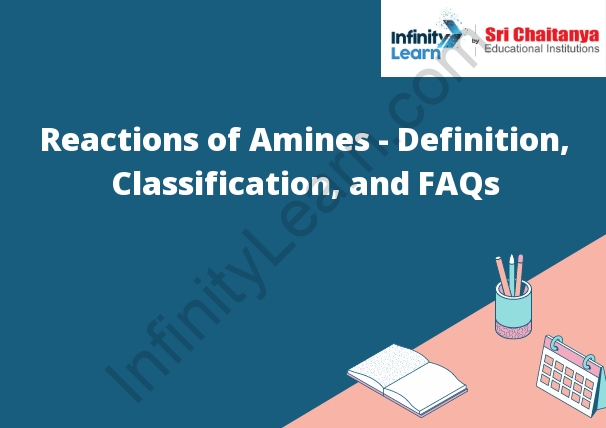Table of Contents
What are Amines?
Amines are organic compounds that contain at least one nitrogen atom bonded to a carbon atom. Amines are found in many different forms, including aliphatic, aromatic, and heterocyclic amines. They are often derived from ammonia, and can be very water soluble. Amines are often used as intermediates in the synthesis of other organic compounds. Reactions of Amines – Definition Classification and FAQs.

In organic chemistry, amines (/əˈmiːn, ˈæmiːn/,[1][2] UK also /ˈeɪmiːn/[3]) are compounds and functional groups that contain a basic nitrogen atom with a lone pair. Amines are formally derivatives of ammonia (NH3), wherein one or more hydrogen atoms have been replaced by a substituent such as an alkyl or aryl group[4] (these may respectively be called alkylamines and arylamines; amines in which both types of substituent are attached to one nitrogen atom may be called alkylarylamines). Important amines include amino acids, biogenic amines, trimethylamine, and aniline; see Category:Amines for a list of amines. Inorganic derivatives of ammonia are also called amines, such as monochloramine (NClH2).
The substituent –NH2 is called an amino group.
Compounds with a nitrogen atom attached to a carbonyl group, thus having the structure R–CO–NR′R″, are called amides and have different chemical properties from amines.
Classification of Amines
Amines are organic compounds that contain one or more nitrogen atoms attached to a carbon atom. The simplest amine is ammonia, NH3. Amines are classified according to the number of nitrogen atoms they contain.
Amine Classification
Primary amines contain one nitrogen atom.
Secondary amines contain two nitrogen atoms.
Tertiary amines contain three nitrogen atoms.
Quaternary amines contain four nitrogen atoms.
Reaction of Amines with Nitrous Acid
Amine molecules can be converted into nitrosoamines by reaction with nitrous acid. In this process, the lone pair of electrons on the nitrogen atom in the amine molecule are used to convert the nitrous acid into the nitroso group (NO). The nitroso group is then able to react with the amine molecule to form the nitrosoamine.
Reactions of Amines – Definition Classification and FAQs.






